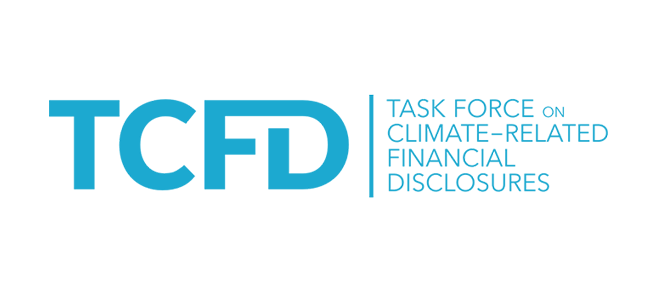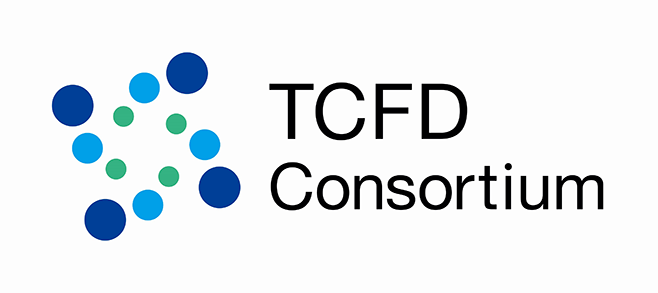Responses to Climate Change
Approach to Combatting Climate Change
Based on the action guidelines of its basic environmental policies, the UACJ Group recognizes its social responsibility as a comprehensive aluminum products manufacturer to take proactive steps to combat climate change and contribute to decarbonization. Accordingly, the Group will work to contribute to achieving the goal set by the Paris Agreement to limit the global average temperature rise to 1.5 degrees Celsius above pre-industrial levels, or at least hold this increase well below 2 degrees Celsius. Towards this end, the Group will scientifically monitor the impact of greenhouse gases (GHG) emitted from its operations on global climate change, and on that basis, carry out initiatives in line with the following action guidelines.


Action Guidelines
- On Scope 1 and 2*1, continue, broaden, and strengthen measures to reduce CO2 and other GHG emissions from operations, achieving for a 30% reduction*2 by FY2030 and striving to realize carbon neutrality(CN)by 2050.
- On Scope3*3, achieve a 30% reduction*4 by FY2030 through increasing recycling and other means, minimize GHG emissions by 2050 through collaborating with various supply chain partners on initiatives to maximize recycling and reduce CO2 and other GHG emissions throughout the entire supply chain.
- Step up previously initiated measures to conserve energy, switch to fuels that result in less GHG emissions, and progressively adopt renewable energy sources
- Provide products and services that contribute to reducing GHG emissions, particularly the UACJ Smart brand of environmentally friendly products, by making the most of the relevant properties of aluminum, such as its ability to reduce overall product weight on a life cycle assessment basis and be recycled many times over
- Promote the development of technologies that contribute to reducing GHG emissions
- Independently and proactively carry out initiatives designed to reduce GHG emissions, and actively disclose all relevant information
- *1:Measurement scope:
【Japan】 UACJ Corporation (Nagoya, Fukui, Fukaya), UACJ Extrusion Nagoya Corporation (Nagoya, Anjo), UACJ Extrusion Oyama Corporation, UACJ Extrusion Gunma Corporation, UACJ Extrusion Shiga Corporation, UACJ Foil Corporation (Isesaki, Shiga, Nogi), UACJ Foundry & Forging Corporation, UACJ Aluminum Center Corporation(Utsunomiya Color Aluminum)
【Overseas】 UACJ (Thailand) Co., Ltd., UACJ Extrusion Czech s.r.o., UACJ Extrusion (Thailand) Co., Ltd., UACJ Foundry & Forging (Vietnam) Co., Ltd., UACJ Foil Malaysia Sdn. Bhd., UACJ Automotive Whitehall Industries, Inc.(Headquarters Michigan District, PADUCAH, SANMIGUEL, FLAGSTAFF) - *2:Emission intensity compared to FY2019, calculated using methods explained in the Japanese government’s Sixth Strategic Energy Plan, issued by the Ministry of Economy, Trade and Industry in 2021
- *3:Measurement scope:
【Japan】 UACJ Corporation (Nagoya, Fukui, Fukaya), UACJ Extrusion Nagoya Corporation (Nagoya, Anjo), UACJ Extrusion Oyama Corporation, UACJ Extrusion Gunma Corporation, UACJ Extrusion Shiga Corporation 【Overseas】 UACJ (Thailand) Co., Ltd., UACJ Australia Pty. Ltd. - *4:Emission intensity compared to FY2019 for Category 1
Information Disclosures Based on the TCFD Recommendations
Governance
The UACJ Sustainability Basic Policy stipulates the company’s basic concepts and approaches for its climate change and sustainability activities.
The Climate Change Countermeasure Steering Committee, established on April 1, 2021 was renamed the Environmental Committee in fiscal 2024. Chaired by the president, the committee organizes working groups for specific initiatives, including carbon neutral measures, recycling, conversion to aluminum, and procurement of raw materials, and in fiscal 2024 added initiatives for circular economy, nature positive, and environmental management. The committee reports important results of the working group’s examinations and activities at management meetings and the board of directors to receive the decisions of management, which conducts direct governance of its activities.
Strategy
In our scenario analysis of climate change countermeasures, we considered risks and opportunities along the entire value chain from raw material procurement to disposal and recycling. We focused on the flat rolled products business of the Rolled Aluminum Products segment because it is a representative field of our business and is highly important in our business portfolio.
Following the recommendation of the Task Force on Climate-Related Financial Disclosures (TCFD) to analyze several climate change scenarios, including for a temperature increase of 2 degrees Celsius or less, we analyzed scenarios for increases of 4 degrees Celsius (2.6°C-4°C) and 1.5 degrees Celsius, which were based on projections by the International Energy Agency, the Intergovernmental Panel on Climate Change of the United Nations, and other organizations.
The 4 degrees Celsius scenario analysis indicated a negative impact even if additional response measures were implemented and new business opportunities appeared. The 1.5 degrees Celsius, which also included additional response measures and new business opportunities, indicated a significant positive impact for our business. Realizing this scenario will require speeding up decarbonation efforts, such as increasing renewable energy usage. We plan to do our part through various initiatives, including installing one of the world’s largest rooftop solar power generation systems at UATH and converting our heat treatment furnaces in Japan from LPG and heavy oil to LNG.
UACJ Business Portfolio (Sales)


Target Sectors (Product Lineups)
| Sector 1 | Sector 2 | Products |
|---|---|---|
| Rolled Aluminum Products Business | Flat-rolled aluminum business | Beverage products (can body and lid materials) Automotive (panels, heat exchanger materials) |
| Extrusion business | Automotive (frames, heat exchangers and piping) IT products |
|
| Aluminum foil business | Pharmaceuticals, food packaging, batteries | |
| Casting and forging business | Automotive (compressor wheels, vehicle air conditioning parts) | |
| Precision-machined Components and Related Businesses | Automotove parts business | Atutomotive (bumpers, sunroof guides) |
| Precision-machined components business | Construction, industrial machinery |
Risks
Transition Risk
- Strategy: Carbon pricing, regulations (for recycling, water consumption, etc.)
- Market: Energy price fluctuations, sharp increases in raw material prices
- Reputation: Customer behavior changes, company reputation changes among investors
Physical Risk
- Persisting: Rising average temperature
- Acute: Extreme weather events
Following risk severity assessments (risks and opportunities), we are analyzing two scenarios of 1.5°C and 4°C temperature increases.
We will continue broadening our scenario analysis to cover all Group companies and deepen the analysis; disclosing and reporting information via the Company website, integrated report, and other media; and communicating with stakeholders.
Action Plans and Details
Scenario Analysis Covering All Group Companies
- The current scenario analysis focused on the flat rolled products business and the operations in Japan and Thailand. The analysis methods used will be developed to cover all Group companies.
- The project team will be used to lead task forces and working groups to be deployed throughout the Group and at all levels of business.
Monitoring and Execution System
- The current analysis focused on two scenarios. Given the high degree of uncertainty surrounding climate change, we will regularly monitor forecasts, conduct impact assessments, and review our strategies.
- A special team was formed for the project to address climate change risk. We intend to give the team an official organization role to ensure the initiative remains a permanent part of our operations.
Increasing the Depth of Analysis
- We consider the current scenario analysis to have been Level 1, and we intend to incrementally deepen the analysis to Level 2 and Level 3.
Risk Management
A TCFD Response Team that has been set up within the secretariat of the Environmental Committee is tasked with identifying risks and opportunities in line with the TCFD framework, and creating scenario road maps. As UACJ has a policy of addressing climate change as a unified Group, the TCFD Response Team includes members from broad cross-section of organizations within the Group, including sales, manufacturing, legal, risk management, public relations, sustainability promotion, and the finance division.
Anticipated Impact on UACJ Group business (risks and opportunities)
| Risk items | Business impact | Evaluation | ||
|---|---|---|---|---|
| Small classification | Index | Risks | Opportunities | |
| Carbon price (carbon tax / carbon border adjustment mechanism) | Revenue Expenditures |
|
|
High |
| Carbon emissions targets / policies in each country (Emissions trading / Mandatory Carbon Footprint Reporting etc.) | Revenue Expenditures |
|
|
Medium |
| Recycling regulations/policies in each country | Revenue Expenditures |
|
|
High |
| Changes in energy mix | Revenue Expenditures |
|
|
High |
| Developing next-generation technologies | Expenditures |
|
|
High |
| Changes in customer behavior | Revenue Expenditures |
|
|
Medium |
Physical risks, opportunities
| Risk items | Business impact | Evaluation | ||
|---|---|---|---|---|
| Small classification | Index | Risks | Opportunities | |
| Increase in average temperature | Revenue |
|
|
Medium |
| Increasing severity of extreme weather conditions (cyclones, floods) | Revenue Expenditures |
|
|
High |
Indices and Targets
The UACJ Approach to Combatting Climate Change announced in June 2022 stated our targets to “achieve carbon neutrality in Scope 1 and 2 by 2050 and in the process reduce our emissions by 30% by FY2030*1.”
For Scope 3, in December 2023, we have set targets of 30% reduction*2 by FY2030 through increasing recycling and other means, and minimizing GHG emissions by 2050 through collaborating with various supply chain partners on initiatives to maximize recycling and reduce CO2 and other GHG emissions throughout the entire supply chain.
We are advancing initiatives to reduce CO2 and other GHG emissions to achieve our targets for FY2030 and achieve carbon neutrality in 2050.
- *1:Emission intensity compared to FY2019
- *2:Emission intensity compared to FY2019 for Category 1
Voluntary Participation in the CDP
By voluntarily participating in the Carbon Disclosure Project, an international climate change initiative, we are furthering our activities to fight climate change while gaining an objective way to evaluate our greenhouse gas management. As one example, we are following the Greenhouse Gas Protocol’s definitions for scope 1 (Direct GHG emissions from the burning of fuel internally), scope 2 (Indirect emissions from the generation of purchased electricity used internally), and scope 3 (Upstream and downstream emissions throughout the supply chain) in categorizing and calculating greenhouse gas emissions, and disclosing them on our website.

